What is fermentation? It is the process that causes the breakdown of energy-rich compounds, carbohydrates, into organic acids. Simply, it is the breakdown of a whole food(s) into lactic acid. This is why most fermented foods have that special “sour” taste. Common fermented foods you may be familiar with are sauerkraut, kimchi, kombucha, miso, beet kvass, etc. Eating these tasty fermented foods provides your body with more bioavailable nutrients, increased mineral absorption, naturally derived probiotics, and increased amounts of UV light within your gut. These byproducts of eating ferments are HUGE!
Eating fermented foods can improve your gut health, brain health, and could be part of your regimen in combatting immune system related illnesses.
The process of fermentation allows nutrients within the food fermented to be more bioavailable to us. For example, the amount of bioavailable vitamin C in sauerkraut is 20 times higher than that of the same serving of plain cabbage! (Mercola, 2009) The lactic acid produced during the anaerobic process of fermentation helps increase absorption of minerals especially calcium, magnesium, copper, and iron. Calcium and magnesium are macrominerals and your body need large quantities of them. These macrominerals are responsible for your bone, muscle, heart, and brain function. Copper and iron are trace minerals and are essential for proper metabolism and hormone levels. Incorporating a small serving of “ferments” prior to at least one of your meals each day will increase mineral absorption and bioavailable nutrients that your body needs to function optimally.
Pathogenic bacteria thrive in an alkaline environment. The lactic acid increases the acidity in your gut when consumed, which inhibits the growth of pathogenic bacteria. Probiotics produced by fermentation have the ability to have a direct antimicrobial effect in your gut. (Ringel, Quigley, Lin, 2012) Nature’s antibiotics without the side effects!
Ferments are also incredibly healthy for us because of their natural probiotic properties. Pre-, pro-, and antibiotics are microorganisms. “Probiotics” is a broad term that encompasses many strains and types of bacteria. Science tells us there is close to 100 trillion bacteria living in your gut now equally more than 3 pounds of bacteria. (Kruse, 2012) As humans we are comprised of 10 times more microbial cells than human cells! (Bada, 2012) Probiotics have many beneficial properties that are essential to your digestion, gut homeostasis, and immune system. The probiotics that are naturally created in the fermentation process are perfect for improving, healing, and optimizing your gut health. This is a circadian match made in heaven! Your brain-gut connection is extremely profound. If you improve your gut health it will also increase your neurological functions and optimize your hormonal processes.
“Think of food as hormone information, not as a metabolic fuel.” – Jack Kruse
In your digestive system, gut, there are many types of microorganisms. The location in the digestive tract (mouth, upper GI, stomach, colon) will determine what types of bacteria should be present for optimal health. Your microbiome in your gut is developed in the womb. After birth, it immediately can change due to the environment you are in. Natural childbirth versus cesarean section, breastmilk versus formula, hormonal imbalances handed down from our mother, environmental factors, etc. these factors will decide how and when your microbiome will change.
There are several ways your microbiome can change and negatively impact your health too. The following are six common ways to negatively affect your gut health:
- Chances are high that you’ve taken an antibiotic at some point, at least once, in your childhood or adult life. Antibiotics can help reduce symptoms and wipe out whatever pathogen is causing an illness; however, they also wipe out the good bacteria that is in our gut.
- Medication, painkillers, and laxatives all cause increased permeability in the GI tract. This means that toxins and bacteria can more easily enter the bloodstream through the gut wall and circulate throughout one’s body.
- Antibacterial soaps, beauty products, cleansers, and disinfectants, can also have an effect on our healthy gut flora by eliminating all bacteria too, whether good or bad.
- Contaminated (chlorinated and fluoridated) drinking water makes it nearly impossible to maintain a homeostasis of gut flora because chlorine will kill all bacteria. Chlorine acts much like antibiotics do, they do not differentiate between good and bad bacteria. Fluoride also increases calcium efflux from your cells after consumption.
- Pesticides, herbicides, pasteurization, and highly processed foods all extend shelf life of foods/beverages by way of denaturing proteins and altering natural occurring bacteria. Ferments give us an abundance of naturally occurring bacteria without pesticides, pasteurization, processing, etc.
- Consuming excessive carbohydrates is also a great way to change your gut health negatively. Bacteria thrive off of sugar (and yeast). Carbohydrates = sugar. If you are consuming a diet high in carbohydrates, there is a chance that the pathogenic bacteria will grow to a point of outnumbering the good bacteria. When there is an imbalance in healthy versus pathogenic bacteria you may experience digestive issues like diarrhea, candida, malabsorption, SIBO etc.…
If you can optimize your immune/defense system, there is a better chance to combat any negative actions that come upon you. Optimal gut health = optimal brain health. Providing your microbiome with the probiotics is one of the healthiest and most advantageous nutritional activities you can do. Even if you do not feel your gut needs “healing” or you’re not battling any neurological or autoimmune issues, probiotics are not the only benefit you receive from eating ferments. The process of fermentation also allows huge increases of UV, ultraviolet, light into your gut! Bacteria have a very different cell membrane than ours that allows them to release and absorb biophotons. Biophotons are light particles, ultraviolet and low visible light. These biophotons are responsible for a vast amount of communication and signaling between cells within your body! Biophotons are also in your food. Raw and live foods are very electron rich; for example, fresh grown vegetables that can store a lot of light and seafood are very rich in electrons. We want all the electrons! When you ingest raw, live, and fermented foods your body can attract, store, and now conduct more of the sun’s energy within your body. (Mercola, 2009) Low intensity emissions of biophotons, via UV light, have been proven in studies to provide repair on an intracellular quantum level. This leads to optimal and increased signaling throughout your body’s systems…this in turn gives us a better opportunity to create the optimal wellness environment.
This last discussion point, fermented foods creating microbes and probiotics that increase UV light within your gut, is probably the most important of the three. You know from past blog posts how important light is to your well-being. Light signals many responses within your body, even as deep as your gut! Determining gut health by measuring your intake of “light-rich” foods, in my opinion, should be the way to determine gut stability and longevity. If your microbiome is healthy, aka 90% of the cells in your body, not only will your body be communicating with itself optimally, but you will also be craving healthy foods too. If your microbiome is imbalanced from eating unhealthy, processed, non-biophotonic rich foods, you will crave those foods. The pathogenic bacteria thrive off of other pathogenic bacteria. If your gut has never experienced fermented foods ease them into your daily regimen. Introduce ¼ cup prior to a meal and see how your gut responds. You can increase intake and frequency as desired once you see how your gut handles the increase of good bacteria.
Fermentation is not a new “trend” or “biohack”, every traditional culture has incorporated this process into their diet. These traditional cultures would ferment anything: vegetables, meats, beverages, grains, etc. It was the natural way of food preservation during the winter months. It is extremely simple to make ferments, even more so now than back in the good ’ol days! All you will need is: canning jars (preferably half gallon size), “unpopped” lids, the bands, whatever vegetables or food source, herbs and/or spices you plan to use, Celtic sea salt, and filtered water. You will make a salt water brine to use at the very end of the canning process to inhibit any putrefactive, bad, bacteria from multiplying during fermentation. The lactic acid that is produced through fermentation also kills off any pathogenic bacteria as mentioned before.
Now…the good stuff, making “ferments” is oh-so-fun! There are many fun recipes to follow to create tasty ferments, each producing a different taste profile. Figuring out what combinations of foods taste good and how long to let it ferment is what makes it a bit of an art. The fermentation steps are listed below and may be modified slightly depending on the recipe you follow. Generally, fermentation is as follows:
- Sanitize glass mason jars or canning jars by filling with boiling water, let sit while you prep the food, then empty.
- Harvest or purchase organic vegetables, spices, herbs, etc. that you want to use
- Use an apple cider vinegar “bath” to remove any pesticide, herbicide, dirt, residue, etc.… that may be on the surface. Produce that has an outer layer, for example: an onion, you do not need to use an ACV bath…just peel outer layer off and discard
- Use a food processor to get all produce into the consistency that you desire.
- (OPTIONAL) A Kitchenaide mixer comes in extremely handy for mixing all ingredients thoroughly to create an even mixture. OR you can choose to food process and start the canning process in layers as well.
- While adding the even mixture to the canning jar, periodically mash all ingredients to the bottom to remove any air pockets that may have formed and allow more room for mixture. You’ll be surprised how much you can fit!
- IMPORTANT!! Leave at least TWO inches free of any ferment mixture at the top of the canning jar.
- Pour ⅛ -¼ cup of the salt water brine around the top of the ferments and cover with a single cabbage leaf.
- Place the “unpopped” (if you are recycling lids make sure they are completely flat and untampered with) lid on your jar and fasten tightly with the metal band.
- Label the date of fermentation on the top of your lid.
- Store in a cool dry place.
- SIDENOTE: You may hear a “popping” sound a few days after they have been canned. That is the sound of lactic acid forming! Aka: it’s working! If you notice a lid did not pop, that’s okay! Wait until you’re ready to consume the ferments and double check there is no putrefactive bacteria present before eating it!
- Keep the ferments refrigerated once they have been opened!
- Bon appetite!
Check out some of our very own ferment recipes: Fancy Ferments Sassy Salsa and Fancy Ferments Skinny Sauerkraut !!
References:
Bada, C. R. (2012, June 2). The Living Light: Can biophotonic light emitted from trained probiotic microbes help balance the body? Retrieved June 01, 2016, from http://communitycommunique.net/wp-content/uploads/2014/05/Presentation-AscendedHealth_The-Living-Light-microbes-and-biophotons_2012_04_20_final-1.pdf
“Fermentation.” Merriam-Webster.com. Merriam-Webster, n.d. Web. 21 June 2016.
Johnson, L. E. (2016). Overview of Minerals. Retrieved June 21, 2016, from http://www.merckmanuals.com/home/disorders-of-nutrition/minerals/overview-of-minerals
Kruse, J. (2012, August 5). BRAIN GUT 7: INTRO TO YOUR GUT MICROBIOME – Living an Optimized Life. Retrieved June 21, 2016, from https://www.jackkruse.com/brain-gut-7-intro-to-your-gut-microbiome/
Kruse, J. (2016, July 4). Dr. Jack Kruse. Retrieved July 11, 2016, from https://www.facebook.com/drjackkruse/posts/1299770093420675
Mercola. (2009, August 15). Your Body Literally Glows With Light. Retrieved June 21, 2016, from http://articles.mercola.com/sites/articles/archive/2009/08/15/your-body-literally-glows-with-light.aspx
Mercola. (2012, May 12). An Interview with Dr. Natasha Campbell-McBride. Retrieved June 21, 2016, from http://articles.mercola.com/sites/articles/archive/2012/05/12/dr-campbell-mcbride-on-gaps.aspx
NIH. (2016, March 10). Minerals: MedlinePlus. Retrieved June 21, 2016, from https://www.nlm.nih.gov/medlineplus/minerals.html
Ringel, Y., Quigley, E. M., & Lin, H. C. (2012, July). Using Probiotics in Gastrointestinal Disorders. Retrieved June 21, 2016, from http://www.nature.com/ajgsup/journal/v1/n1/full/ajgsup20127a.html
Williams, D. (2015, September 3). Lifestyle Habits That Damage Gut Bacteria. Retrieved June 21, 2016, from http://www.drdavidwilliams.com/lifestyle-habits-that-damage-gut-bacteria/
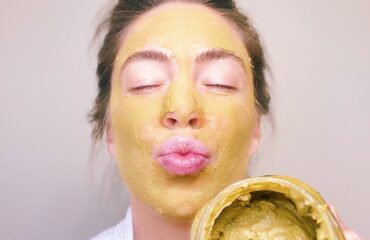
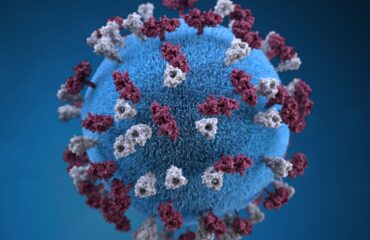

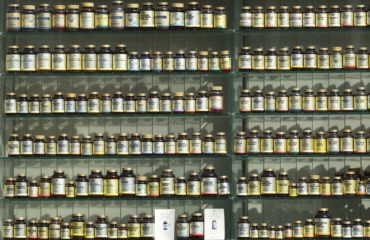

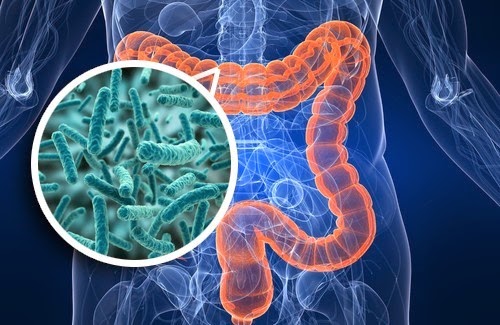
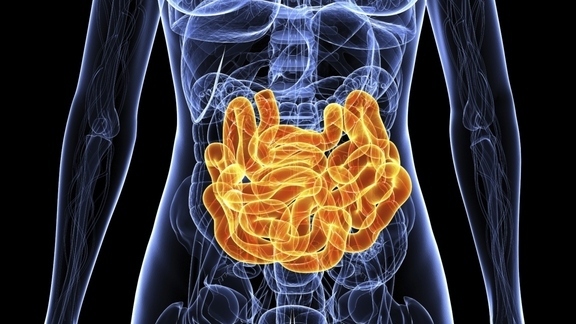
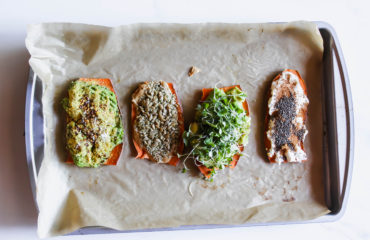
Comments (2)
Awesome article post.Thanks Again. Much obliged. dedcabgkcade
[…] in December in my snow boots….”, I got you! I will briefly discuss fermentation here, but see Fermentation Blogpost if you really want to understand the benefits of fermenting and a step-by-step process how to. For […]
Comments are closed.